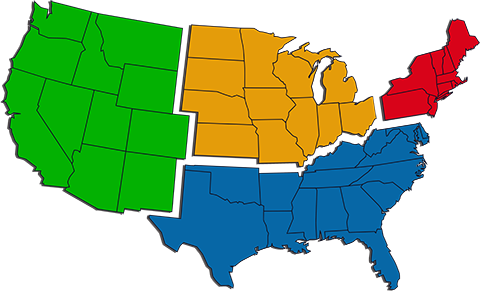Architecture Firms Facing Entrenched Market Slowdown

Firms report weak demand as economist warns recovery hinges on pipeline reactivation
THE MOST RECENT REPORT: December 17, 2025
The AIA Architecture Billings Index (ABI) score for November was 45.3, marking the 13th consecutive month of declining billings at architecture firms, and the 35th month of a score below 50 out of the last 38.
Inquiries into new projects only increased modestly this month, and the value of newly signed design contracts continued to soften. Firms are unlikely to see a significant increase in billings until work in the pipeline resumes.
“Weakness in business conditions at architecture firms continues to be widespread, with declining billings across all major specializations and in every region except the Midwest,” said Kermit Baker, PhD, AIA Chief Economist. “However, inquiries for new projects continued to increase, and design activity at firms in the Midwest – a region that traditionally has had a disproportionate share of manufacturing activity – appears to have hit its bottom for this cycle and is expected to continue to improve.”
Key ABI highlights for November include:
- Regional averages: Midwest (52.3); South (46.1); West (43.6); Northeast (43.1)
- Sector index breakdown: institutional (47.6); multifamily residential (46.6); commercial/industrial (45.2); mixed practice (firms that do not have at least half of their billings in any one other category) (44.5)
- Project inquiries index: 51.4
- Design contracts index: 42.7
Regional and sector categories are measured as three-month moving averages and may not align with the national score.
Inside Lighting strives to accurately report certain data on the day it is reported by the AIA, but updates to past data with new three-month rolling averages might not be made. For official and most current reports, refer to the AIA ABI numbers. All ABI data is sourced from the AIA.
Interpreting the ABI:
The Architecture Billings Index (ABI) is a leading economic indicator of construction activity. It is produced by the American Institute of Architects (AIA) and it reflects the approximate nine-to-twelve month lead time between architecture billings and construction spending.
The ABI is based on a monthly survey of architecture firms that asks respondents to rate the level of their billings (or the amount of new design contracts) as either "increase," "decrease," or "no change" from the previous month. The results are then compiled into an index, where a score above 50 indicates an increase in billings, and a score below 50 indicates a decrease in billings.
The ABI is widely used in the construction industry, as well as by economists and analysts, to track the health of the construction market and to forecast future building activity. It is considered a leading economic indicator because changes in architecture billings often precede changes in overall economic activity, such as employment and GDP.
The ABI provides a snapshot of the demand for design services as well as an indication of the near-term outlook for the construction industry.
The survey panel asks participating architectural firms whether billings increased, decreased or stayed the same in the month that just ended. According to the proportion of respondents choosing each option, a score is generated, which represents an index value for each month.
- An index score of 50 indicates no change in firm billings versus the previous month.
- A score above 50 indicates an increase in firm billings versus the previous month.
- A score below 50 indicates an decrease in firm billings versus the previous month.
- NOTE: Index numbers cited for the last three reported months are preliminary.
- The regional and sector categories are calculated as a 3-month moving average, whereas the national index, design contracts and inquiries are monthly numbers.
Source: The American Institute of Architects (AIA)
National Architecture Billings Index
Source: The American Institute of Architects (AIA)
RELATED: Historical ABI Data 2008 - 2022 »
Don’t miss the next big ABI update…Click here to subscribe to the inside.lighting InfoLetter |
Regional Architecture Billings Index
(Three month rolling average)

Source: The American Institute of Architects (AIA)
Sector-Specific Architecture Billings Index
Three-month rolling average
Commercial/Industrial
Buildings related to commerce and industry. Office space, banks, retail, factories, etc.
Institutional
Schools, civic/government buildings, museums, hospitals, etc.
Multifamily Residential
Town homes, apartment complexes, condominiums, etc.
Mixed Practice
Firms that do not have at least half of their billings in any one other category.
Source: The American Institute of Architects (AIA)
Don’t miss the next big ABI update…Click here to subscribe to the inside.lighting InfoLetter |








